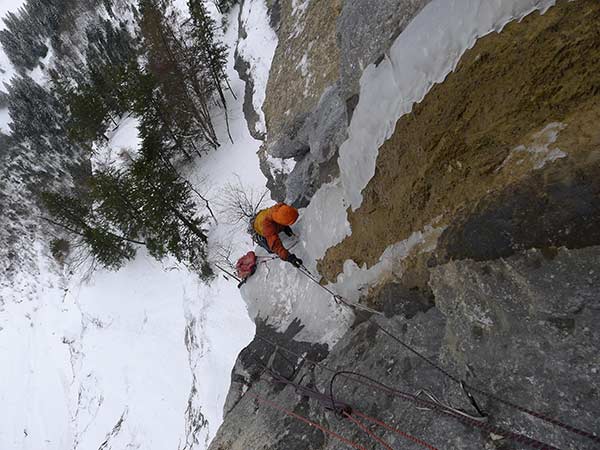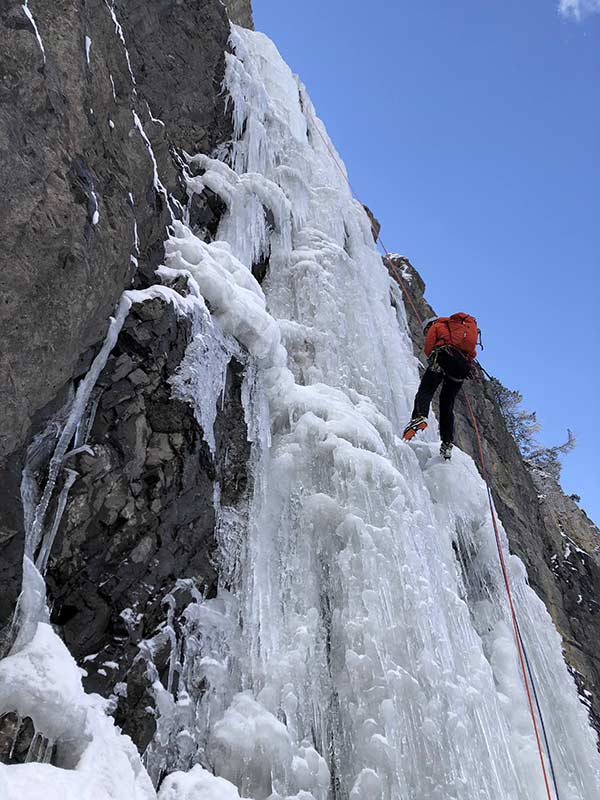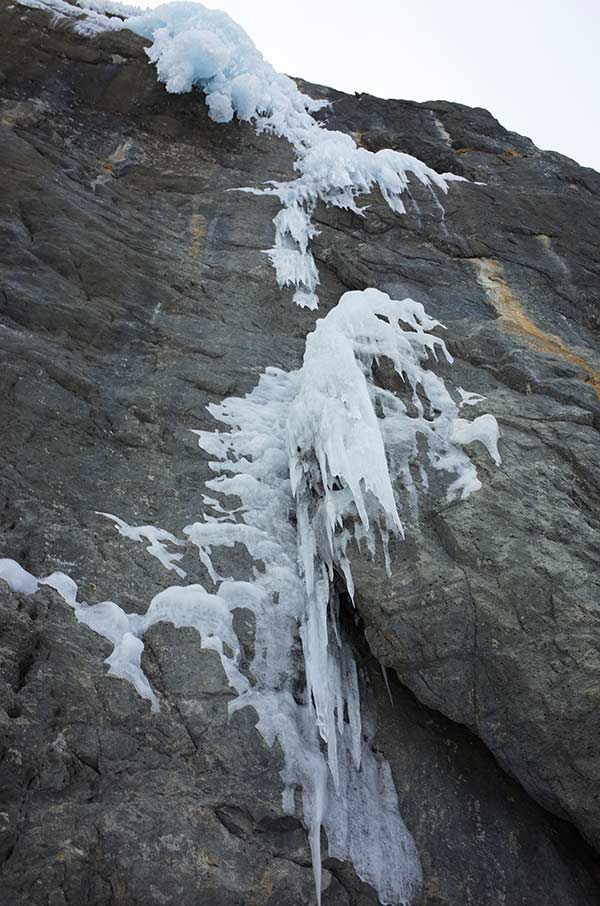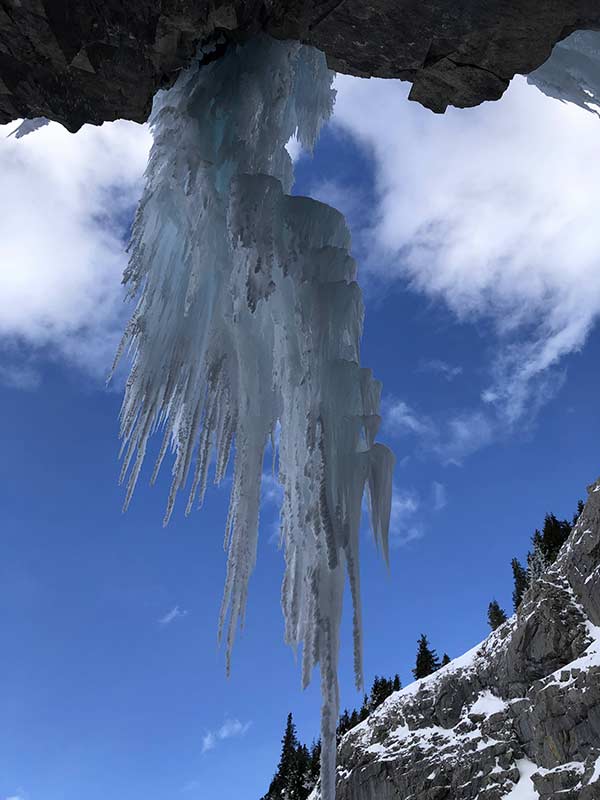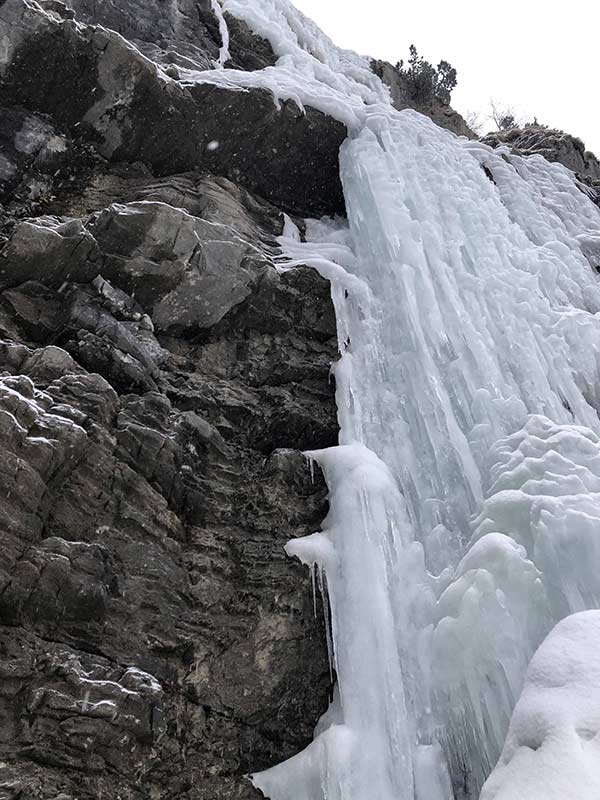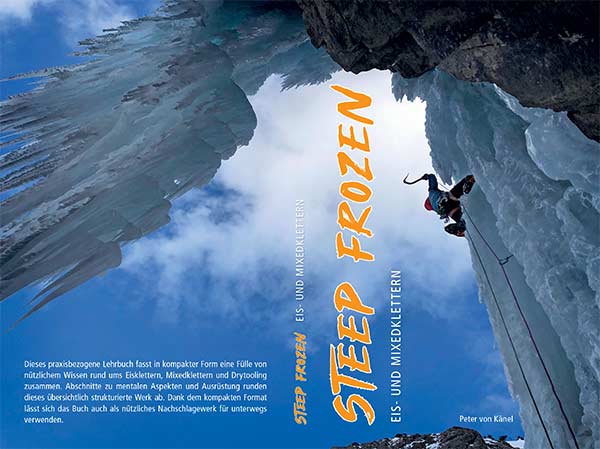With falling temperatures, the anticipation of ice and mixed climbing increases. In line with the upcoming start of the season, we are launching an ice cream series with professional tips from Peter von Känel. In the first article, the mountain guide and author explains how to better assess the ice conditions.
A post by Peter von Kaenel – presented by Petzl and Bächli Bergsport
"What are you doing on the weekend?" "We go ice climbing.» "Yikes, ice climbing? Isn't that extremely dangerous? The ice is completely unpredictable and can fall down at any time." This reaction is typical of people who only know ice climbing from hearsay and pictures. There are important indicators that help to reliably assess ice conditions.
What you will learn in this article:
- Decision-making aids for tour planning
- Influence of temperature on ice quality
- Assessment of the connection between ice and rock
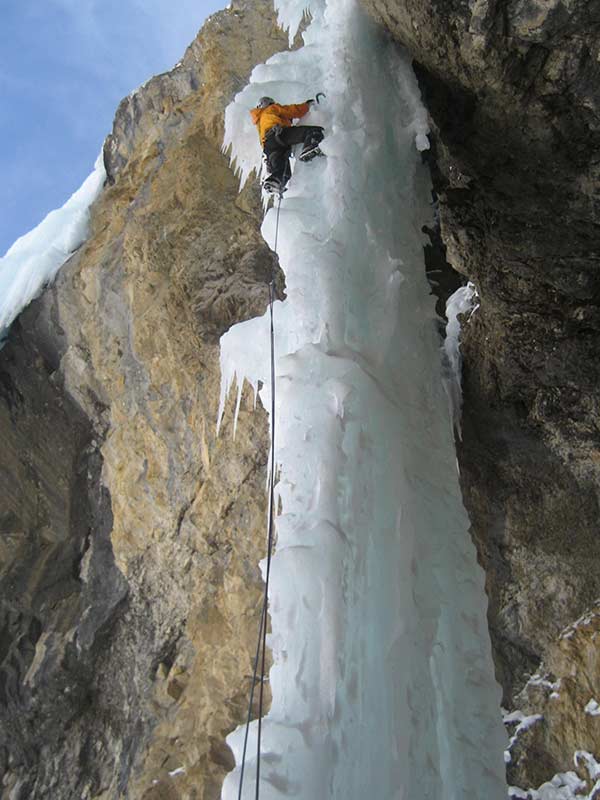
Knowledge, experience & training
But what about the «unpredictable ice»? Is it even worth getting up early for ice climbing and possibly strenuous ascent? And how can I judge how well the ice is connected to the rock at the start and during the climb? Having the knowledge to answer these questions not only increases the joy of climbing but also increases safety.
"Especially with ice and mixed climbing, the risk can be controlled relatively well, because with sufficient knowledge and experience, almost all dangers can be identified."
Peter von Kaenel
In addition, during a tour you practically always have enough time to observe the current situation and to react appropriately. Good training and an approach that is adapted to your own skills also allows non-professionals to keep the risk of ice and mixed climbing within an acceptable range.
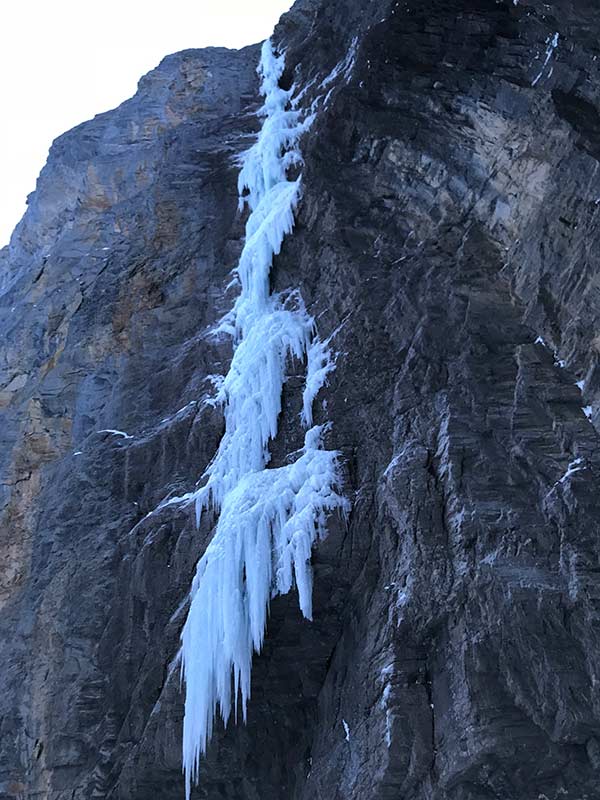
Important for tour planning: temperature on the ice surface
Luckily for us ice climbers, the temperature on the ice surface is significantly lower than the air temperature under favorable conditions. The main driver of this cooling is radiation. This is favored by low humidity, a cloudless sky, a large opening angle to the sky and as little wind as possible.
"With temperature fluctuations, ice stability and climbing fun behave very differently in some situations."
Peter von Kaenel
The predicted air temperature is not decisive for tour planning, but rather the temperature on the ice surface. Many measuring stations that can be accessed via the Internet provide (snow) surface temperatures. These can roughly be transferred to the ice surface and can therefore be used for tour planning.
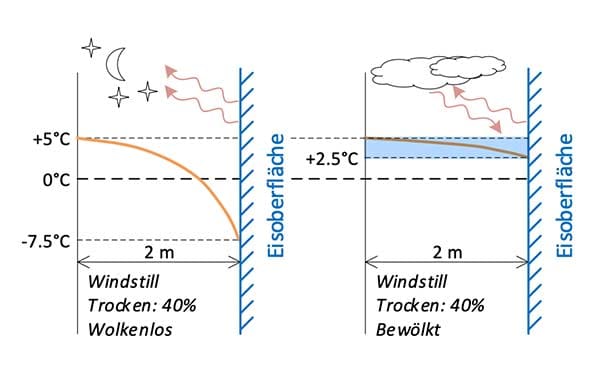
The temperature on the ice surface influences ice stability and climbing fun
The graphic below shows how fluctuations in temperature affect the ice surface. You can see that ice stability and climbing fun behave differently in some situations.
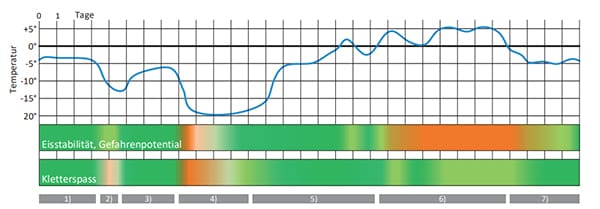
The individual phases
- Constant, moderate minus temperature of the ice: The ice climbing conditions are good in terms of ice stability and climbing fun.
- Less pronounced drop in temperature: Tensions build up temporarily in the ice due to the uneven temperature distribution. The ice stability decreases slightly as a result. Due to the temperature equalization within the ice, however, the tensions are reduced within a short time and the ice becomes more stable again. The climbing fun is temporarily clearly clouded by the tension and the harder and more brittle ice surface.
- Moderate warming, the ice temperature remains below 0°C: The ice climbing conditions are good in terms of ice stability and climbing fun.
- Significant and rapid drop in temperature: Due to the uneven temperature distribution, large stresses temporarily build up in the ice. Ice stability decreases and the ice becomes brittle and unstable. Filigree columns and free-hanging cones can break spontaneously and fall down. The ice has a strong tendency to burst when setting the ice tools. The climbing fun tends towards zero, and the reliable setting of the ice axes becomes very difficult and tedious.
- Warming, but ice surface temperature remains below 0°C:
The ice climbing conditions in terms of ice stability and climbing fun are getting better again. - Warming above 0°C: The ice is melting and increasingly separating from the terrain. Ice stability decreases and the ice becomes soft, washable and dangerously unstable. The climbing fun remains quite passable with increasingly soft ice surface, but more (melt) water runs.
- A few days with temperatures in the negative range: The ice is slowly recovering and freezing again – this is assuming that water is still flowing. The ice stability is slowly getting better again. The climbing fun quickly changes from good to very good.
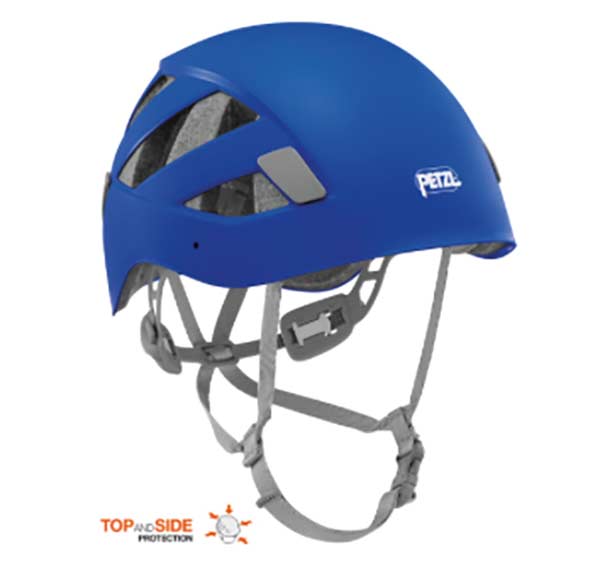
Petzl Boreo/Borea – Well protected thanks Top & side protection
In vertical activities - including ice and mixed climbing - bumps and punches are just as common on the sides as they are on the top of the head.
In order to protect the head in the best possible way, Petzl has it boreo and Boreas robust helmets with optimal impact protection on the sides as well as in the front and back of the head.
The Top and Side Protection label stands for additional protection that goes beyond the standard norm (protection of the upper head against falling objects such as ice).
Connection between rock and ice
Negative influences: Why ice is separating from the rock:
"Particular caution is required on wet rock in the immediate vicinity of the icefall."
Peter von Kaenel
Favorable influences on ice stability
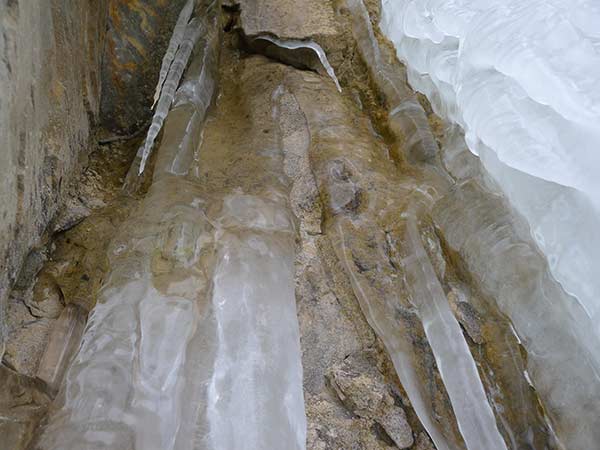
The connection between rock and ice is ideal when you can see the rock through the clear ice as if through glass.
From a distance, the color of the ice allows conclusions to be drawn: a bluish tint indicates well-connected, compact ice.
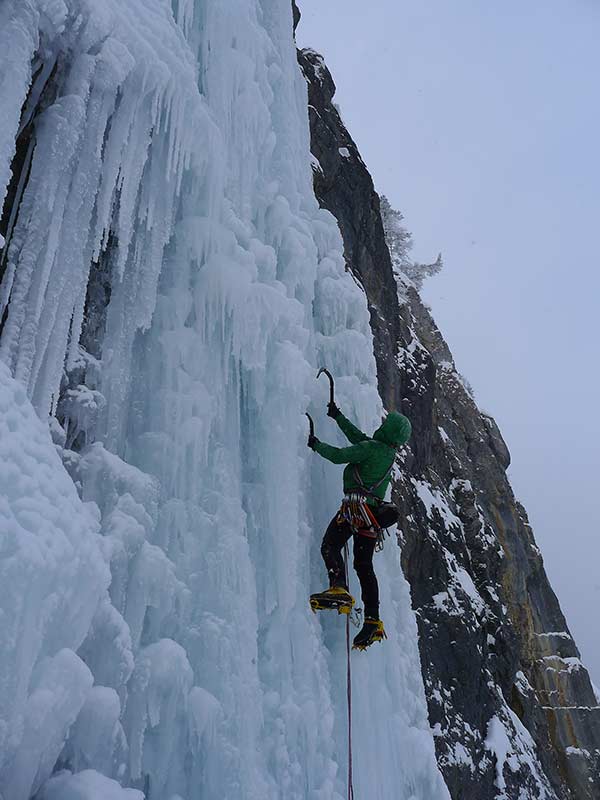
To the author
Peter von Känel, born in 1973, is a mountain guide, aviation engineer and passionate climber. For many years, Peter has been intensively involved not only with ice and mixed climbing, but also with the human factor.
In addition to some sensational ice and mixed first ascents such as the BASE route in the Lauterbrunnen Valley, Peter has repeated many extremely demanding routes, sometimes as a mountain guide.
With these tours, as well as in many discussions with experienced climbing colleagues, Peter has acquired a wealth of knowledge about ice and mixed climbing over the years. He passes on this knowledge in courses, coaching and with his new textbook.
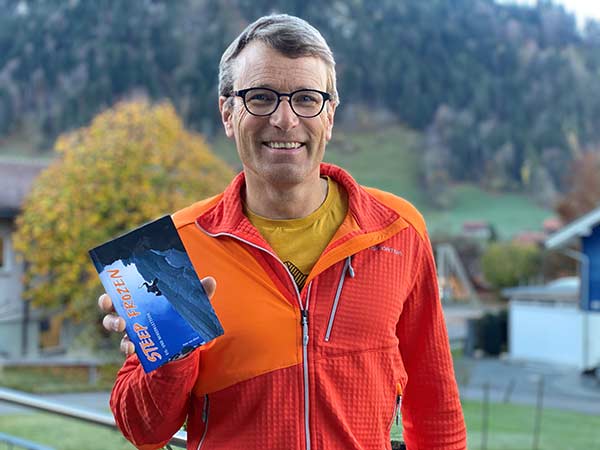
Steep Frozen: A Practical Textbook
This ice cream series only scratches the surface of this fascinating topic. For all those who want to know more about it, the beginning of November 2022 is the book Steep Frozen appeared.
This practical textbook by Peter von Känel summarizes a wealth of useful knowledge about ice climbing, mixed climbing and dry tooling in a compact form.
Sections on mental aspects and equipment complete this clearly structured work. Thanks to its compact format, the book can also be used as a useful reference book for on the go.
The book is in Filidor publishing house published and costs CHF 32.00. You can find more information, including extracts and reader feedback, at Peter von Känel's Website.
That might interest you
- Frigo-Combo (450m, M7/6a): Schüpbach and Von Känel's youngest adventure
- Ice climbing: What to consider when getting started & tips from professionals
- Marc-André Leclerc: Outstanding free soloist away from the limelight | Watch movie for free
Do you like our climbing magazine? When we launched LACRUX, we decided not to introduce a payment barrier. It will stay that way, because we want to provide as many like-minded people with news from the climbing scene.
In order to be more independent of advertising revenue in the future and to provide you with even more and better content, we need your support.
Therefore: Help and support our magazine with a small contribution. Naturally you benefit multiple times. How? You will find out here.
+ + +
Credits: Cover picture Peter von Kaenel


